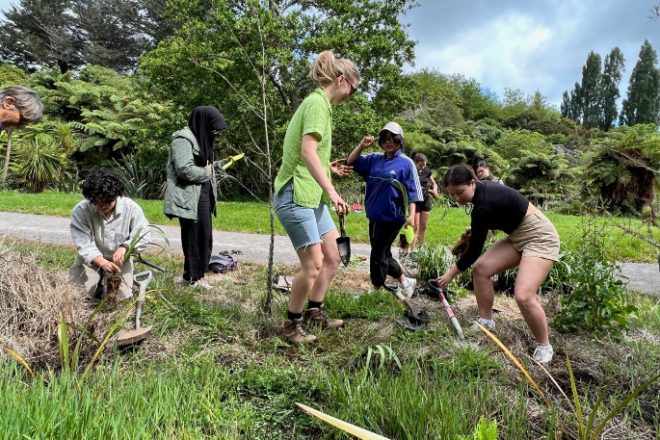베이오브플렌티 지역 협의회는 어린이들이 환경을 보호하고 기후 변화와 자연 재해에 대비할 수 있도록 격려하고 있습니다.협의회의 학교 지속가능성 및 회복력 기금 (School Sustainability and Resilience Fund) 이 현재 운영 중이며 지역 내 학교, 유치원 및 유아 교육 센터의 신청서를 접수하고 있습니다.
총 35,000달러에 달하는 이 기금은 교육 기관이 환경 프로젝트를 시작할 수 있도록 지원하는 것을 목표로 합니다.베이 오브 플렌티 지역 협의회의 참여 팀 리더인 Steph Macdonald는 이 기금을 통해 학교가 자체적으로 환경 프로젝트를 설계하고 실행할 수 있다고 설명했습니다.
기금을 받은 이전 프로젝트로는 습지, 자전거 거치대, 쓰나미 대피 표지판, 과수림 및 채소밭, 퇴비통, 지렁이 사육장, 기상 관측소 건설 등이 있습니다.지난 2년 동안 시의회는 80건 이상의 신청서를 접수했으며 지역 전역에서 10만 달러 상당의 프로젝트에 자금을 지원할 수 있었습니다.
기금 지원 자격을 갖추려면 프로젝트는 자연 재해 및/또는 기후 변화 위험에 대한 인식 제고, 장기적 탄력성 및 지속 가능성 개선, 온실가스 배출 감소 등 다음 범주 중 하나 이상에 기여해야 합니다.
또한 이 기금은 어떤 프로젝트에 자금을 지원할지 결정하는 데 지역사회를 참여시키는 것을 목표로 합니다.작년에 위원회는 커뮤니티로부터 총 2,150표를 받았습니다.또한 16명의 청소년에게 기금을 통해 15,000달러를 배분하는 데 도움을 줄 수 있는 기회가 주어졌습니다.
학교 지속가능성 및 회복력 기금 신청은 3월 15일까지 가능합니다.자세한 내용은 www.artipate.boprc.govt.nz/ssrf를 참조하십시오.




























































